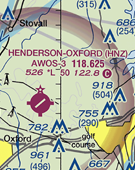Three ways to train: The right way, the wrong way, and the FAA way
Years ago when I was serving my time with Uncle Sam, a favorite phrase was “there are three ways to do something: the right way, the wrong way, and the Army way.” The more I become involved in flight training, the more I discover this axiom still applies, except now it is “the right way, the wrong way, and the FAA way.” Because this is so true, it is important for each pilot to carefully evaluate his or her needs as they make a decision on how and where to spend their hard-earned training money.
Training is basically divided into two segments, and while the two do and should overlap, there are distinct differences. The first segment covers the FAA way, and it is the process involved in obtaining a certificate or rating. The object here is to pass the flight test. Unfortunately, the ability, knowledge, and skill to pass a flight test does not necessarily provide the ability to operate safely and efficiently in our current airspace system. The second segment of training involves the knowledge and ability to operate within the real world of flying. Take landings. The FAA method required for the flight test emphasizes a fairly constant airspeed, and being slowed down well in advance.
However, as a practical matter, if you are flying a Cessna 172 into a major airport, you must learn how to make high-speed approaches and not slow down to final approach speed until absolutely necessary. The FAA procedure, while safe, would cause all sorts of problems for ATC and other airplanes in a high density traffic area. However, the “real world” procedure will not meet the requirements of the FAA practical test standards.
Now, what should you, as a student looking for proper training, do? If you already have the appropriate certificate or rating and are looking for recurrent training, the answer is easy. Learn the right way. However, if you are a prospective student looking to get a certificate or rating, you are faced with a dilemma. Should I learn the FAA way or the right way?
The answer is simple: You must learn both ways if you want to be a good pilot. The problem comes in deciding in which order to learn them. Your instructor will play a major role in your decision. It’s a fact that many of the full-time instructors in the country today have very little experience in the real world of flying. They are very good at preparing a student for the flight test. Unfortunately they have accrued very little flying experience in their short careers.
On the other hand, I spent 25 years instructing in the AOPA Air Safety Foundation flight training clinics. The instructors there were outstanding, with thousands of hours of flight experience, and did a fantastic job in training pilots for the real world of flying. However, as a pilot examiner who has given flight tests to some of their applicants, I can assure you they are not very good at preparing students for flight tests. So, what should you do? If you are lucky enough to encounter an instructor who is both an experienced pilot and a knowledgeable instructor, tell him “get me the certificate and then teach me what I should know to be a really good pilot.” If you are working with a young instructor, let him get you the certificate, but then be prepared to find an experienced instructor and pay for a little extra dual to become a really proficient pilot.
It is up to you to find the right combination of training. Just make sure you learn the FAA way and the right way – and not the wrong way.
WHICH WAY ARE YOU LEARNING: When choosing a flight instructor, make sure you find one who teaches you the FAA – and the right – way.


